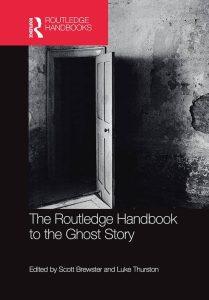2017
 This chapter traces the development of the Chinese-style ghost story in Asian literatures from the classical Chinese genres of zhiguai, and chanqui, through their transformation into Japanese kaidan, to contemporary versions of them. It discusses the structural characteristics and shared themes of such stories, and argues that their modern reincarnations can be divided into reproductions (where contemporary stories are written in a style closely resembling older texts), utilizations (where contemporary authors make use of their audience’s knowledge of the old texts), and hybridizations (where contemporary stories alter older texts, introducing elements of local folklore, modern settings, or other literary influences). As the name suggests, stories of the strange relate to all manner of extraordinary phenomena. To simplify things, the discussion will be limited to the stories that understand ghosts as the returning spirits or souls of the deceased, often taking very material forms in their interactions with humans. The ghosts in question should also be understood as individuals rather than a collective entity, even when they are described as one’s ancestors.
This chapter traces the development of the Chinese-style ghost story in Asian literatures from the classical Chinese genres of zhiguai, and chanqui, through their transformation into Japanese kaidan, to contemporary versions of them. It discusses the structural characteristics and shared themes of such stories, and argues that their modern reincarnations can be divided into reproductions (where contemporary stories are written in a style closely resembling older texts), utilizations (where contemporary authors make use of their audience’s knowledge of the old texts), and hybridizations (where contemporary stories alter older texts, introducing elements of local folklore, modern settings, or other literary influences). As the name suggests, stories of the strange relate to all manner of extraordinary phenomena. To simplify things, the discussion will be limited to the stories that understand ghosts as the returning spirits or souls of the deceased, often taking very material forms in their interactions with humans. The ghosts in question should also be understood as individuals rather than a collective entity, even when they are described as one’s ancestors.
